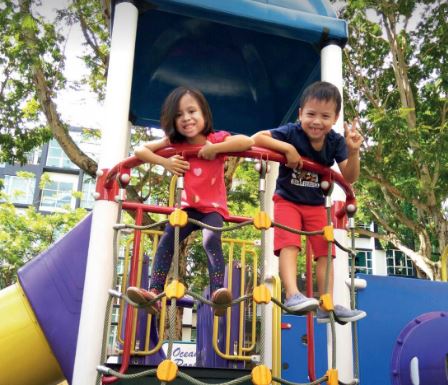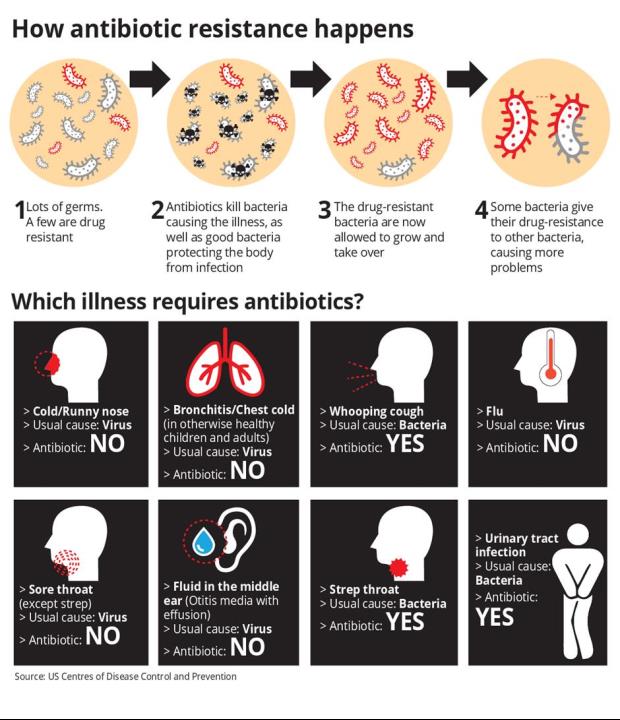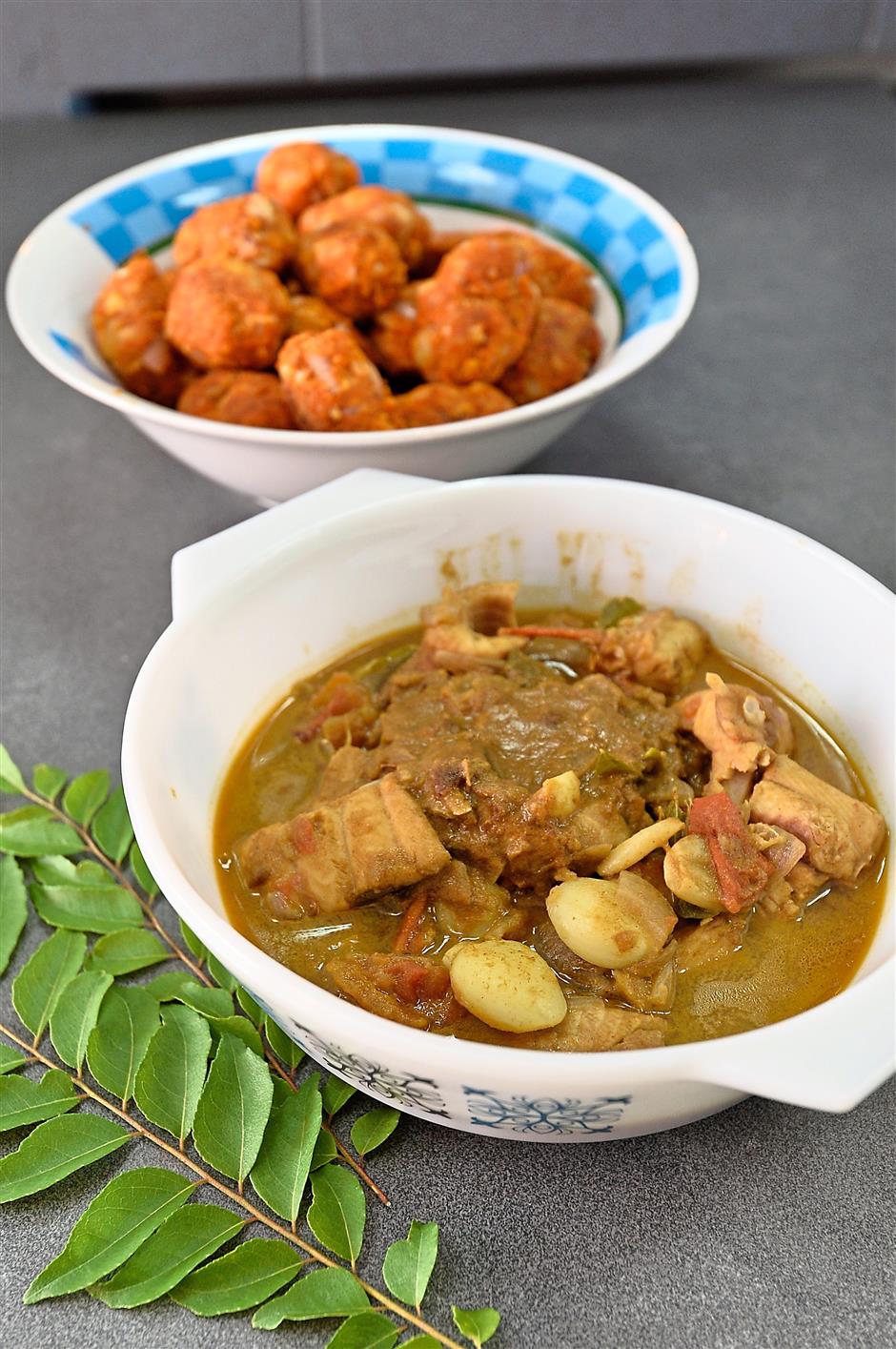Living with haemophilia: 'My 2-year-old bled nonstop for 4 days'
Accidental bumps, tumbles and skin scrapes are part and parcel of growing up. For siblings Faith and James Loh, however, these minor childhood mishaps can potentially cause massive, uncontrolled bleeding.
Faith, seven, and James, six, suffer from haemophilia, a lifelong bleeding disorder
that prevents their blood from clotting properly. This means that wounds may take an abnormally long time to heal.
Bleeding may also occur internally, into the joints or muscles. “Once, Faith had a massive bump on her head that remained for six months. There wasn’t any blood fl owing out, but the bleeding was still happening – inside.
Some people thought she was being abused,” shares their mother Anne, 44.
Anne is a carrier of the haemophilia gene and had unknowingly passed the condition to her children.
The condition is so rare that it affects just 300 to 350 people in Singapore, according to fi gures from the Haemophilia Society of Singapore (HSS).
Even more uncommon are girls like Faith, as haemophilia affects mostly males. Anne’s youngest child, Beth, three, does not have the disorder.
The stay-at-home mother discovered their condition only after James underwent a tooth extraction at the age of two, which caused him to bleed continuously for days.

“We didn’t suspect anything at first. The bleeding wasn’t obvious in the day, probably because James was
swallowing a lot of blood throughout the day. The bleeding continued while he was sleeping so when he woke up, there would be blood everywhere – on his face, the pillow, sheets and mattress,” says Anne.
By the fourth day, his face had literally “turned white” from the massive blood loss, she shares.
James was rushed to the Children’s Emergency at the hospital, where he was given a blood transfusion and had his empty tooth socket stitched up. Even then, blood continued oozing out from the stitches and his wound took months to heal.
Tests later showed that James was suffering from a severe form of haemophilia.
This means that he has less than 1 per cent of normal clotting factors (proteins in blood that control bleeding) in his blood. In this group of haemophiliacs, bleeding episodes tend to occur frequently and spontaneously even when they do not sustain an injury.
The bad news did not end there. Although it is uncommon for girls to get haemophilia, Faith was not spared.
“I was in total shock and could not believe it. I had not expected Faith to get it too, because girls are usually carriers of the gene. At the time, I was eight months’ pregnant with my third child.
I remember crying nonstop and being terribly fearful of the unknown,” says Anne.
OVERCOMING HER FEAR OF NEEDLES
Despite her intense phobia of blood and needles, the brave mum learnt to wield a syringe so that Faith and James can be treated at home. This involves injecting clotting factors that her kids lack, which spares them multiple trips to the hospital.
It took her a year to pluck up the courage to administer their treatments herself. In the beginning, the kids had to endure many inaccurate and painful pokes, sometimes up to nine tries and over two hours for a single shot.
“They’d scream and shout whenever I didn’t do it right. Faith would pray very hard for me to get her shot right the first time,” says Anne.
“To think I used to be the type of person who would feel faint at the sight of blood – I didn’t even dare to hold my babies during their vaccination shots. But I have to administer the infusions for them now because the injections are necessary and life-saving,” she adds.
Without proper early treatment, haemophiliacs will suffer long-term problems in adulthood. For instance, repeated bleeding episodes can damage the joints and lead to disability over time, says Melvin Tan, a member of the executive committee of the HSS.
Sometimes, serious complications such as internal bleeding in the brain, which can lead to death, may also occur.
Faith’s condition is classified as moderate, and she currently receives treatment on-demand when she experiences a bleed.
But with James’ severe condition, he has to undergo twice-weekly infusions, known as prophylaxis, to prevent spontaneous bleeding.
So far, the treatments have given him a good quality of life and he is able to still enjoy a normal childhood, which his
Although Anne takes measures to protect them from injuries, such aschildproofing the house with rubber mats and corner guards, she knows she cannot keep a watchful eye forever.
Being overprotective would not be good in the long run as they need to stay active to build strong muscles for good joint health, she explains. James is homeschooled, while Faith started Primary 1 this year; she enjoys attending school and making new friends.
“There is only so much we can do and worry about. I have to trust in my faith, and count my blessings that nothing serious happened to them before they were diagnosed. Looking back, I’m really thankful that I had a relatively stress-free time with James and Faith in their first few years before we found out they had haemophilia,” says Anne.
LIFE MADE EASIER
There is no cure for the condition, but newer treatments can drastically improve quality of life.
In May this year, Colorado mountaineer Chris Bombardier, who suffers from severe haemophilia, conquered Mount Everest, proving that advances in medical care in this area have come a long way.
“In the 1960s and 1970s, a child diagnosed with severe haemophilia would probably not even live into adulthood. Today, doctors understand that preventive treatment, even before a bleed happens, is important. In Singapore, we are fortunate to have kept pace with medical advancements in the area of haemophilia care,” Melvin says.
The future also seems promising for these individuals, with some longer-acting treatments now available on the market so that haemophiliacs do not need to top up their clotting factors so regularly.
However, Anne can’t help but worry about the future. Treatment costs are expected to rise as the children will require higher dosages as they grow.
James’ treatments alone cost at least $2,000 per month, sometimes going up to $4,000. Although a substantial proportion of the cost is subsidised by the government and HSS, the Lohs still have to shoulder other out-of-pocket expenses.
“We do worry (about the costs), because at some point, James will have to afford the treatment himself. Hopefully, medical science would have caught up by then and he’ll need fewer infusions. I also hope that my children will eventually be able to manage their condition and muster the courage to administer their own injections,” Anne says.
Despite the many challenges, she tells parents of newly diagnosed children not to be disheartened.
“Don’t be afraid, because with medical science, it is now possible for a child with haemophilia to live a normal life,” she says.
RED FLAGS OF HAEMOPHILIA
Melvin Tan, a member of the executive committee of the Haemophilia Society of Singapore (HSS), points out common signs of haemophilia:
• bruises that take an extended time to go away. This may appear near the skin surface as a blue-black bruise or a swelling.
• prolonged bleeding after getting a cut, injury or a dental visit.
The HSS, which currently has over 100 members, provides support to people with haemophilia, including subsidies that defray part of their treatment costs. Those who wish to lend a helping hand may do so via its online donation platform at www.giving.sg/haemophilia-society-of-singapore.
The article was first published in the Sept 2017 issue of Young Parents magazine.
Published at Sat, 11 Nov 2017 05:30:00 +0000





